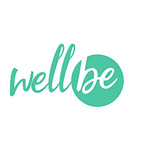In 2012, power poses took over the world after a TED Talk from Researcher at Harvard University, Amy Cuddy. In the twenty minute talk on the 2010 study conducted by Dana Carney, Andy Yap, and herself, Cuddy suggests that standing like you’re Wonder Woman for two minutes in a toilet cubicle before a meeting could “significantly change the way your life unfolds”. But, although this has become one of the most watched TED Talks of all time, What is power posing? What’s the science behind it? Do they actually work? And what are some easy ones you can try at home?
What is Power Posing?
Power Posing, or ‘Postural Feedback’, is a series of stances and moves that make you feel powerful. In the office, we have a tendency to make ourselves smaller, hunching over, crossing our legs or arms to give a closed off body signal. With power posing, we open up, stand tall, and feel strong, which translates not only into our physical appearance but also changes our mental outset.
The science behind the stance
In Cuddy’s in depth study into power poses, participants would either stand in a ‘low-power pose’ (leaning inwards, making their body smaller) or a ‘high-power pose’ (open chest, expanded arms) for two minutes and then would take part in a mock interview.
Cuddy found that those who stood in a ‘high-power pose’ felt more confident and performed better during mock interviews compared to their counterparts. Not only that, but it also changed their hormonal levels, increasing their testosterone and cortisol levels, which Cuddy defined as heightening the effects of how powerful they felt.
But in trying to replicate Cuddy’s original experiment, 11 separate studies failed to replicate the original findings of her TED talk. And shockingly, in a recent post, Cuddy herself even states that ‘new evidence’ has made her re-evaluate her original study and therefore does ‘not believe that “power pose” effects are real’. Yet, she goes on to respond to her original post, stating that while the science may not be backed, she supports Columbia University Professor Adam Galinsky’s view, that ‘a person’s “sense of power…produces a range of cognitive, behavioural, and physiological consequences,” including improved executive functioning, general optimism, creativity, authenticity, the ability to self-regulate, and performance in various domains, to name a handful.’
The simple version? To be seen as powerful, your body language must be open and strong. By standing tall, you’re manipulating others’ perception of you, making them believe that you’re more in control of the situation than you may feel.
How to put the Power in Pose — easy power poses to replicate
Even though it might not exactly be backed by science, some people still feel the psychological benefit of power posing before a big meeting, interview, or any regular day in the office. To practice, take two minutes out of your day, find a quiet space, and strike a pose! To make the moment more mindful, you could close your eyes, breathe deeply, and choose one of these three poses below …
The Wonder Woman
In this classic power pose, stand with your feet shoulder-width apart, place your hands on your hips, and stand tall. If you want to feel like a winner, you could also keep your feet firmly in the ground and raise your hands above your head. Not only are you the superhero this meeting needs, but you’ve just won it too.
The Table Topper
Are you shorter than your colleague but still want to dominate the room? Take control of any vertical difference by changing your horizontal space by leaning over the table, supporting yourself with your arms. Taking up more space? Taking up more conversation. You’ve got this.
Keep ’em Keen with an Outward Lean
Typically, in order to convey we’re interested, we naturally lean in. Instead of closing our body language, allowing someone else to dominate the conversation, next time you’re in a meeting or job interview, lean backwards in your chair. In control of the situation and powerful in your position, you’ll exude confidence.
Written by Alison Irlam
WellBe is spearheading the way to a brighter future for corporate wellness. Our innovative portal is scientifically designed and tailored to each individual employee to improve their wellbeing. We specialise in a range of services from coaching and therapists, to meditation and reading materials. Our aim is to reduce workplace stress that costs UK businesses £42 billion per year. Get in touch with us by visiting our site wellbe.global for more information.
